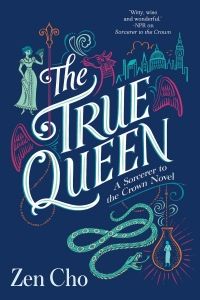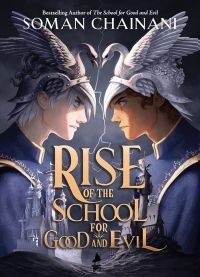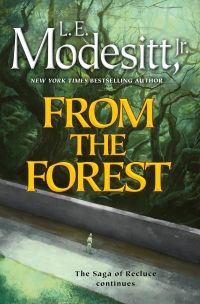
8 Books from Fantasy Series That Can Work as Standalones
Fantasy books are often published in trilogies or series. We delve into each one’s universe and analyze the magic system, which demands extensive details. As a result, many fantasy books must be part of a series, with the story continuing in several parts. For example, consider the Lord of the Rings series, which is divided into several volumes.
But the sight of stacks of fantasy books can be overwhelming sometimes. I, myself, am guilty of ignoring thick fantasy books of about 600-700 pages because I think I won’t be able to finish one in this lifetime. To get fully immersed into the story, it’s always necessary to start with book one, unless the author has written the series in such a way that you can skip ahead. Some fantasy series, fortunately, allow you to skip one or even two books. You can start with the second or third book, or you may have mistakenly read the second book and realized that the story can stand on its own, despite being part of a larger series. These fantasy books are quite uncommon, as most require readers to pick up the first book before proceeding to the next.
In the list below, I have some recommended fantasy books about mythologies, faraway kingdoms, otherworldly realms, and fierce witches. These books can be read in any order; they work well on their own, having their own sets of characters and conflicts while remaining fully connected to the series. The preceding books may not be necessary, but reading them first may enrich your overall reading experience.
Here are eight books from fantasy series that can work as standalones:

The Children of Bathala: A Mythology Class Reunion by Arnold Arre
This is the sequel to Filipino writer Arnold Arre’s graphic novel, The Mythology Class, in which the story revolves around figures from Philippine mythology. Though this one’s a sequel, it can also be devoured without ever picking up the first.
In the first installment, Nicole leads a ragtag group of university students on a mission assigned by Mrs. Enkanta to capture and return escaped engkantos, or mythical spirits, in Filipino myth. In this sequel, more than 20 years have passed since that incident, and everyone has grown up.
Another evil is trying to emerge, and the group must embark on a new mission. But can they do so given their apparent decline?

The First to Die at the End by Adam Silvera
This is the prequel to Silvera’s bestselling They Both Die at the End, and it works well on its own—even if you haven’t read the first book.
In book one, two boys discover that they have only one day left to live. So, they sign up for an app to meet people who share their fate, spend their final day together, and fall in love. This prequel has a similar premise: Two teenage boys fall in love, but one of them must die.
Death Cast, a service that calls people when they are about to die, makes its debut for the first time. Valentino, who signs up, receives a call that he will die in the next few hours. Luckily, before that, he meets Orion, for whom he has grown feelings. Both make the most of the time they have left before one of them dies.

The True Queen by Zen Cho
The book follows Cho’s debut fantasy, Sorcerer to the Crown, which revolves around Zacharias, who is enslaved, on his quest to investigate Victorian-era England’s magical dry spell.
Despite being part of a series, this follow-up focuses on sisters Muna and Sakti and takes place in the same universe as the first book. Sakti is ill, and Muna must help her. If Muna wants her sister to survive, she must travel to Britain and learn how to use magic. But dealing with the politics of this strange new world can be tricky, especially for women like her.

Rise of the School for Good and Evil by Soman Chainani
As the prequel to Chainani’s bestselling series, this primarily focuses on the origins of the conflicts introduced in the series.
In Chainani’s world, pairs are kidnapped and pitted against each other. Sophie and Agata are the main opposing characters in The School of Good and Evil. This time, 200 years ago, two brothers fight each other, one for good and the other for evil.
This clash will determine the fate of many children who are taken away to the schools.

Grand Tour by Elizabeth Chatsworth
Grand Tour comes after Chatsworth’s Victorian-era set Brass Queen, which follows Constance, a magical weapons dealer. Because of her dangerous profession, she’s often the target of numerous assassination attempts. But fortunately, her love interest, the dashing CIA-like agent Trusdale, comes to her aid.
In this follow-up, Constance is pressured by a British organization to return exotic artifacts that her father had kept in their family estate. The problem is that the estate disappeared into a different dimension, gone into the unknown. To get it back, Constance must retrieve several magical keys in various parts of the world.

The Conjurer by Luanne G. Smith
This is the third installment in Smith’s cozy Vine Witch series, which begins with The Vine Witch, and follows Elena as she breaks a curse and reclaims the vineyard that has been taken from her. In The Glamourist, Elena’s friend Yvette asks for her help in discovering her true identity.
In this sequel, meanwhile, the spotlight is on Sidra, Elena and Yvette’s friend. She’s a jinn who returns home as a stronger jinn named Jamra pursues her. Together, the three friends devise a plan to stop the evil from destroying the world.

Back in a Spell by Lana Harper
Back in a Spell is the third volume in Harper’s Witches of Thistle Grove series. In the first book, Payback’s a Witch, self-exiled witch Emmy returns home for a familial obligation she can’t refuse, only to discover some troubling revelations about a man she’s dating. Bad to Cursed focuses on Isidora, whose family is blamed for a dark magic incident, and who must work with a man from her rival family to repair their damaged reputation.
In this one, Nineve has finished nursing her wounds and is ready to find love. So she signs up on a dating app and meets Morty. But when Morty discovers Nineve’s last name and her family’s connection to the buyer interested in purchasing Morty’s family business, their budding relationship is stifled. Will it ever be rekindled by their magical and undeniable bond?

From the Forest by L.E. Modesitt, Jr.
Modessitt’s long-standing Saga of Recluse series begins a new universe in this 23rd installment. And even if you haven’t read the first 22, you won’t get lost trying to make sense of this book.
Alayiakal, who’s training as a soldier for the war, must conceal his magical abilities. (Having them is forbidden in the military.) In Modessitt’s world, everyone must have a designation. If they catch a whiff of Alayiakal’s hidden talents, he will either be driven out or reassigned to the magicians, a field for which he’s not particularly qualified.
Alayiakal uses his magic to win battles for their kingdom and work his way through the army’s ranks.
Looking for more fantasy books that don’t require you to read a sequel? Here are some standalone fantasy books that aren’t part of a series that you might enjoy.














